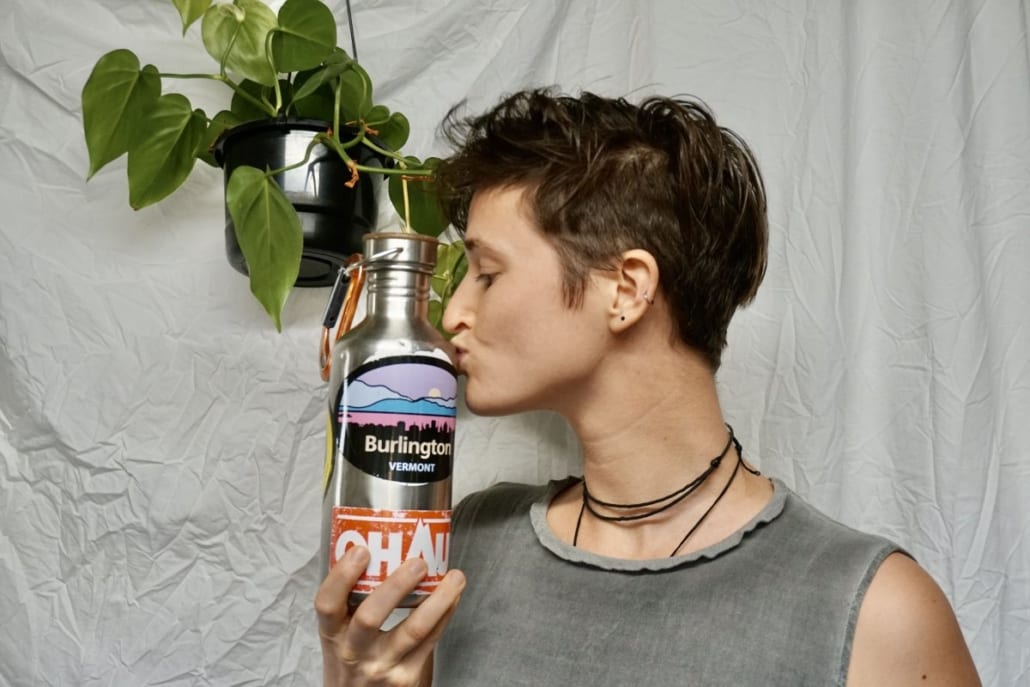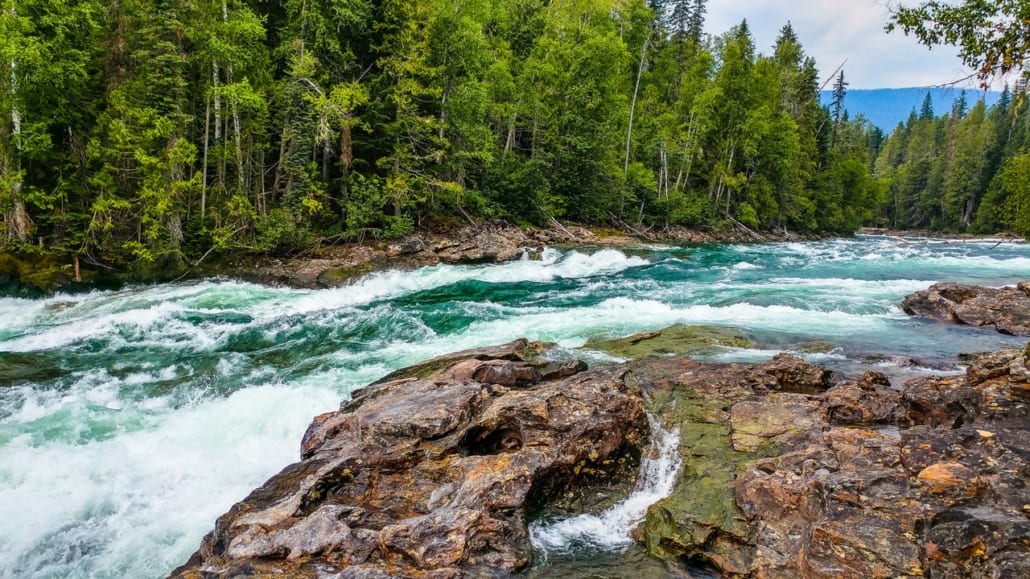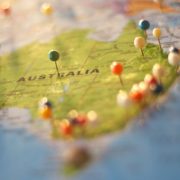Sustainable Water Bottles & Filters for Backpacking, Camping, & Hiking
The topic of hydration is hotly debated among backpackers. Your water supply is crucial to any backpacking trip, and choosing a lightweight water bottle and water filtration system is one of the most important choices you can make to keep your pack weight light. In recent years, many have chosen to buy Smart Water bottles because they pair nicely with the Sawyer water filter, making a lightweight combo-deal. But if you’re interested in sustainable backpacking, camping, or hiking, you should consider some of the following options for your water bottle and filter system.
The Most Sustainable Water Bottle: Stainless Steel
Stainless Steel water bottles are the most sustainable choice. A stainless-steel bottle is good for three reasons, all of which are important not only for your own health but for the health of the earth.

1. Stainless Steel Water Bottles mean Zero Microplastics
First, using a stainless steel water bottle means you can be 100% confident it is not leaching any nasty chemicals or micro-plastics into your water. Plastic, especially Smart Water bottles, are not designed to be used over and over again.
They are called single-use for a reason. Especially when bottles get heated, like on a hot summer’s day, they will leach toxins and micro-plastics into your bottle.
If you are going to use a plastic bottle, opt for a Nalgene or a Bladder. They are often made of “re-usable” plastics, meaning they are designed to be used over and over. Nowadays, most companies will make them without nasty BPA, BPF, BPS, and phthalates, but it’s worth keeping in mind, they are not perfect.
2. Stainless Steel can Truly be Recycled
Using a stainless steel water bottle will not only keep you healthier, but you can be confident that when the product reaches its end-of-life, you can ACTUALLY recycle it. If you grew up like me, you would have been taught that plastic is recyclable. This is not the case.
Plastic is “down-cycled”, meaning a recycled Nalgene bottle cannot make another Nalgene bottle. The heating and re-molding process makes the plastic weaker, meaning it needs to be turned into something smaller like a plastic bag, or new plastic needs to be added to it to make another Nalgene bottle. After plastic gets down-cycled once, it needs to go to the landfill.
It cannot be recycled again, meaning it is not a circular system, but is rather a wasteful linear one. Stainless-steel on the other hand is 100% recyclable. It can be recycled into the same product over and over again for its whole life. Using a stainless steel water bottle is supporting a circular system.
3. Sustainable Water Bottles are a Vote for a Better Future
A third reason to buy a stainless-steel bottle is recognizing that it is a vote. It is a vote for the environment. Every time we buy a plastic Smart Water (which is owned by Coca Cola), we are voting for more plastic.
It is the simple supply and demand concept. The more we buy, the more they supply. Vote wisely with your dollar. Companies will shift to please the consumer, so shift them to take care of the environment.
The Most Sustainable Water Filter

Despite the popularity of the Smart Water-Sawyer Filter combo among ultralight backpackers, it’s far from the most sustainable choice. I tried the Sawyer Filter, and it broke on the second day.
I was thankfully able to repair it with some duct tape, but when I spoke with other people, they had similar qualms. It’s a tempting filter to buy since it’s cheap and light, but I don’t think we should be supporting companies that make crappy products. You only end up buying more later on.
For a more sustainable water filter, I recommend using the Steri-pen Filter. Full disclosure, I haven’t actually used this one, but I’ve spent a lot of time researching it. Plus, friends that have used it, love it.
It’s light, fast, and rechargeable. You fill up your bottle, stick the light into your bottle, click the button, and within 90 seconds, you have drinkable water. The UV light kills the harmful bacteria and viruses, making drinkable water in seconds.
The biggest drawback of this system is that if you have “floaties” in the water, the light will do nothing to get rid of them. You may need to bring a stocking (aka, tights) and filter the floaties and grit out.
Another reason the Steri-pen is a more sustainable water filter is that it’s USB rechargeable. This means you are not putting harmful batteries into the environment every charge. It is more expensive, but I guarantee it will last you longer than a Sawyer.
Sustainable Ultralight Backpacking Water Bottles
If you’re focused on keeping your pack-weight as light as possible, stainless steel water bottles may not be your first choice. My favorite ultralight backpacking water bottle combo that is zero-waste is a Platypus Bladder paired with a Steri-pen Filter.
When compared to the weight of an empty Smart Water bottle paired with the Sawyer filter, it’s only a 4-ounce difference, and it’s faster, more reliable, and better for the environment.
If you’re still considering the trade-offs, here’s an overview of the weights of various water bottles and filters, plus the time it takes to produce drinkable water using each system.
Water Bottles by Weight (When Empty)
- EcoTanka (stainless-steel): (2 liters) = 10.2 ounces (300 grams)
- Nalgene: (1 liter) = 6.2 ounces (176 grams)
- Platypus Bladder : (2 liters) = 1.3 ounces (37 grams)
- Camelbak: (3 liters) = 7 ounces (198 grams)
- Smart water: (1 liter) = 1.2 ounces (34 grams)
Filter Weights and Time to Produce Drinkable Water
- Steri-Pen (1 liter) = 90 seconds and weighs 5 ounces (141 grams)
- Sawyer Filter (1 liter) = 10 minutes (if not drinking straight from a bottle) and weighs 2 ounces (57 grams)
Let’s make the right choices when backpacking, camping, and hiking to protect the very environments that we love to explore. If you’re looking for more ways to make your backpacking trips more sustainable, check out my 7 tips for zero-waste backpacking.
About the author

Kelsey Porter
Kelsey Porter is an avid backpacker with a passion for living sustainably. She is currently based in Antarctica where she works as a Field Specialist. To learn more zero-waste backpacking tips, visit her website Sustainability Seeker. You will find tips on sustainability, including: plant-based recipes, produce bag recommendations, aluminum versus stainless steel articles, and more.
You can also find Kelsey on Instagram @sustainability_seeker or @outdoor_okay.









Leave a Reply
Want to join the discussion?Feel free to contribute!